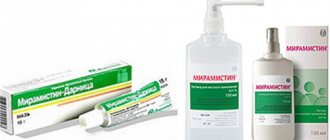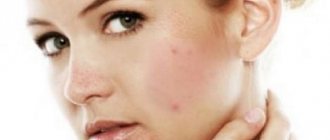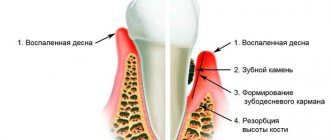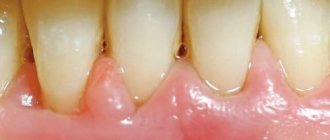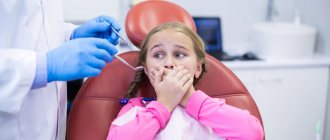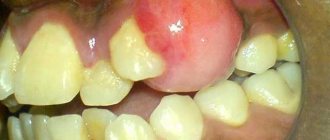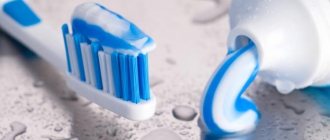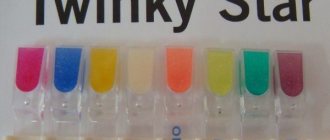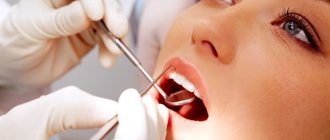570
From the material presented below, you can glean information about what the essence of the photodynamic therapy method is, what restrictions exist for its use when patients are prescribed this procedure.
In addition, the pros and cons of the technique will be discussed, as well as those of its characteristics that give it an advantage over other treatment methods.
General presentation and purpose
The use of laser technologies in the dental field was an unsurpassed breakthrough, and back in the early nineties of the twentieth century, their high effectiveness in the fight against periodontal disease was established. After some time, the technique began to be actively introduced into the work of dentists.
Laser medical equipment is a technique that generates light radiation in a narrowed spectrum, focusing the flow of electromagnetic waves. This stream kills pathogenic bacteria, sterilizing the treated area.
This approach in dentistry is considered the most suitable and controllable for the destruction of pathogenic microflora. It is used to clean the oral cavity and form the basis for effective therapy in the future.
Such laser dental equipment comes in various types: operating on diodes, argon gases, carbon dioxide, and so on. The choice of device is made by the attending physician, who has a complete picture of what is happening.
To improve the visibility of colonies of pathogenic bacteria, the specialist applies a special photosensitizer composition to the treated area. This allows laser beams to be directed more accurately.
Its action begins almost immediately after application. Microorganisms, having absorbed the active substance, become marked. After this, it is not difficult to destroy pathogens.
The rays destroy the cellular structures of bacteria, and they die. As a result, the treated area is sterilized, inflammatory processes are completed, and the tissue immune system is restored.
Let's figure out why teeth are loose and what to do in such a situation.
Come here if you are interested in what to do if your teeth are crumbling.
At this address https://zubovv.ru/hirurgiya/udalenie-zubov/alveolit-posle-etiologiya-terapiya-profilaktika.html we will consider the reasons for the development of alveolitis after tooth extraction and the tactics for its elimination.
General concepts and scope of use
Guarantees
Photodynamic therapy (PDT), which guarantees:
— diagnosing the development of cancerous tumors at the initial stages;
— therapy of discoloration during transformation of the color coloring of elements of dental units;
— carrying out antiseptic and antifungal treatment of the patient’s mouth.
Impact principle
In addition to the main result, the rays penetrate into the structure of pathological tissues, from which it follows that the use of PDT methodology in seventy-five percent guarantees the elimination of defects, the treatment of which was previously possible only with the help of surgery.
Irradiation of pathology reduces the increase in opportunistic infections, and with high results destroys enterobacteria and mycotic forms that are not inherent in the oral cavity.
At the end of therapy, a protective film is formed on the surface of the damaged gum, which consists of protein components.
The specificity of therapy using the energy of photochemotherapy helps to successfully apply the methodology to relieve inflammation and infection in phthisiopulmonology, surgery for abscesses, urology, otorhinolaryngology, gynecology, and ophthalmology.
Essence and features
The meaning of the general principle of influence:
- - carrying out advance preparation - drilling a cavity in case of carious lesions or cleaning canals in case of periodontitis or pulpitis;
- - local application of a photosensitizer - a substance that is responsible for coloring defective tissues;
- - a guarantee of its maintenance for an indefinite period of time (five to fifteen minutes), which is important for the accumulation of the main composition in the affected area;
- - an impact lasting from three to twenty minutes on a previously prepared area of the oral cavity with light radiation, which has a certain wavelength (approximately 635–660 nm). The uniqueness of the process is the fact that the photoactive dye accumulates only in the area that has defective cells - enzymes, lipid compounds, nucleic acids.
Provoked by the influence of the light flux, the photochemical reaction guarantees an antibacterial result due to the appearance of free radicals and the release of active oxygen in a chemical form that has a large amount of potential energy.
The active form of oxygen, which is released in the process, guarantees the destruction of a significant proportion of harmful forms, aerobic and anaerobic organisms due to the destructuring of cell walls made of polysaccharides. Its traumatism not only guarantees an imbalance in the vital activity of bacterial pathology, but also leads to a transformation of the configuration and subsequent cellular destruction.
Clients choose laser treatment using the influence of a beam on tissues treated with a photosensitive reagent, as it helps to quickly remove traces of swelling, pus and inflammation, and gives the sick person a chance for quick rehabilitation.
Indications and restrictions
Therapy of periodontal disease is most effective in the initial stages. In this regard, when the first signs appear, you should immediately consult a doctor.
The main symptoms include:
- High susceptibility to influences, soft tissues bleed;
- The shade of the gum tissue changes. It is important to monitor the condition of the gum areas directly adjacent to the tooth enamel;
- Soft tissues swell, itching and pain appear;
- The gum tissue is covered with plaque formations of light and gray tones;
- The distance between the teeth has increased. This is evidenced, for example, by the fact that while eating, particles accumulate in the interdental space;
- Suppuration appears in the oral cavity;
- Soft tissues lag behind the enamel, forming voids and depressions.
It is worth noting that diseases of the oral cavity and dentition very often at the initial stage have common symptoms. In connection with these parameters, the listed parameters do not always indicate periodontal pathologies.
Before prescribing treatment, the doctor must make a correct diagnosis and conduct a comprehensive diagnosis.
Laser treatment is the most harmless and gentle. It is not contraindicated even for pregnant and lactating women, although medications and surgeries are practically not prescribed. However, a specialist must conduct a thorough diagnosis, and only then prescribe a procedure.
This is done in order to identify contraindications at a very early stage and thereby protect the patient from the risk of complications.
Limitations when using laser treatment include:
- tuberculosis infection;
- the presence of cancerous tumors (the presence of malignant tumors in the mouth is especially important);
- diabetes mellitus;
- previous cardiovascular diseases.
The main advantages of laser treatment are accelerated and effective effects, minimal likelihood of recurrent diseases, absence of injuries and antibacterial effect.
No pain or stitches are required; after therapy, the patient immediately returns to his usual routine. The effect of treatment appears almost immediately.
This is expressed in the fact that swelling disappears, pain subsides, and the inflammatory process ends.
In the future, it is necessary to follow the instructions prescribed by the doctor and undergo regular preventive dental examinations.
Modern methods of treating wedge-shaped dental defects and their effectiveness.
In this publication, learn how to whiten teeth using tetracycline.
Here https://zubovv.ru/lechenie/zubyi/kak-pravilno-oformit-nalogovyiy-vyichet.html all the most important things about how to apply for a tax deduction for dental treatment.
Details
Indications and restrictions
The above-mentioned abilities of the photodynamic treatment methodology help to apply it as needed:
- - to prevent the formation of signs of cheilitis, acute and chronic forms of gingivitis, periodontitis, stomatitis, alveolitis;
- — implementation of antibacterial treatment of the root canal and carious cavity;
- — early diagnosis and effective treatment of lipomas and malignant tumors in the mouth;
- — therapy for inflammation that develops after the installation of implants;
- — effective therapy for fungal, viral and inflammatory infections of the mucous membranes;
- — treatment to eliminate pathogenic microflora in the soft tissue area of the mouth;
- - treatment of gums that have bleeding and increased sensitivity, peeling of gum tissue from the dental unit with the formation of a “pocket”;
- — formation of the normal course of the rehabilitation period of damaged tissues;
- - prevention of blood poisoning.
The regular use of therapy methodology in pediatric dentistry is due to the safety of the procedure, the absence of side effects and complications associated with its implementation.
special instructions
Before prescribing the procedure, it is important to undergo an examination to exclude the possible occurrence of negative results that are associated with the individuality of the body.
Another study will lift the curtain on the choice of the optimal photosensitizer option and the generated wavelength suitable for the influence, taking into account the specifics of the patient’s human body.
It is important to maintain a quiet recovery period.
Monitor the dose, otherwise there will be burns.
Basically, many patients are advised not to be exposed to direct sunlight for three months after the procedure.
Contraindications:
- lung and heart diseases - tuberculosis, heart attack;
— diseases of the kidneys, liver and heart in the stage of decompensation;
— age restrictions — up to four years;
- with caution - pregnancy and lactation;
Requirements for equipment and drugs
Dentists in practice use mainly two types of equipment:
- PACT system (Photodynamic antimicrobial chemotherapy).
- Photoditazine equipment manufactured in Russia.
For the PACT system, the photosensitizer base is blue toluidine compounds , and energy flows are generated by a semiconductor laser diode.
The domestic analogue works on substances from the chlorine series , which guarantee greater safety due to the absence of contraindications. The beam is generated by a helium-neon laser unit.
Stages of the procedure
The procedure includes several stages:
- Cleaning the oral cavity from plaque and hard formations on the surface of the enamel;
- Coating the treated area with a photosensitizer composition .
It is important to apply to the gum tissue and the depressions and detachments formed due to the development of the disease. Often the gel is of natural origin, based on components of marine flora from which chlorophyll is extracted. Due to naturalness, it is possible to avoid the ingress of toxins and also reduce the risk of developing allergies. - The area treated with the composition will become available for laser treatment within five to ten minutes . During this time, the active substance marks pathogenic bacteria and they become visible. After the procedure is completed, you need to rinse off the remaining gel;
- Carrying out a laser therapy procedure. The flow of light rays is concentrated at the base of the instrument. It is designed in such a way that it has a thin and flexible structure that allows it to fit into the cavities between the tooth and gum.
The interaction period is no more than two minutes. During this period, the active substance absorbed into the membranes of bacterial cells is destroyed.This leads to a chain of reactions that kills the pathogenic cell.
In addition to destroying pathogenic flora, the laser beam improves blood circulation in the treated tissues, which speeds up the healing process. The laser has a positive effect on the soft tissues of the oral cavity.
- Formation of a protection coating . After exposure to the laser beam, a protective layer appears on the surface of the soft tissue. It prevents bacteria from re-entering the gum tissue.
It is important to know that when carrying out manipulations, the specialist and the patient must protect their eyesight, since the flow of light is harmful to the eyes.
The duration of the procedure depends on the volume of work of the specialist and the degree of neglect of the disease. However, the therapy still does not last more than sixty minutes.
In most cases, during one visit the doctor manages to treat all damaged areas. Sometimes, with particularly large pathologies, a second session will be required, which can be carried out no earlier than seven days later.
A one-time procedure makes it possible to eliminate the factors and manifestations of periodontal phenomena in the oral cavity . But to consolidate the effect, it is recommended to undergo laser therapy again after six months. This will completely destroy all existing bacteria.
The video shows the process of performing PDT.
Benefits of using photoditazine in photodynamic therapy
Today, there are a large number of drugs that are used in photodynamic therapy. Photoditazine is rightfully considered the most effective of them. The main advantages of this drug include the following factors:
- A drug of natural origin (made from green algae);
- Hypoallergenic - the drug does not cause allergic reactions;
- Can be used for increased tooth sensitivity;
- Rapid elimination from the body – photoditazine is eliminated from the body within 24 hours;
- No side effects;
- The drug improves blood flow, which has a beneficial effect on the health of gums and teeth;
- There is no need to use antibacterial drugs and pain relief;
- Painless treatment;
- To obtain the desired effect, one procedure is enough;
- Affordable price;
- The effect of treatment with photoditazine lasts for a long time;
- The duration of the procedure is no more than 20 minutes.
In some cases it is necessary to repeat the procedure. The decision to perform a repeat procedure is made by the attending dentist, based on the clinical picture after the first stage of treatment. Typically, patients are recommended to repeat the procedure after 6-8 months, if indicated.
Advantages of the method
First of all, the following advantages of the technique are highlighted:
- Therapy of soft tissues of the oral cavity occurs without pain, that is, anesthesia is not required;
- Most often, when the inflammatory process has reached a severe stage, doctors prescribe a course of antibiotics and antibacterial drugs. But the use of the laser method makes it possible to avoid the use of medication;
- Laser technologies make it possible to start the process of tissue restoration, which makes it possible to avoid surgical treatment. This greatly facilitates treatment, since a long and painful rehabilitation period is not required;
- PDT makes it possible to activate recovery processes after surgery to eliminate the consequences of periodontal disease;
- Since there is no contact between the device and tissue during therapy, the risk of infection is reduced to zero.
Expected Result
Launching active metabolic processes makes it possible to obtain the following results:
- Restoration of the immune system at the site of the procedure;
- Improved blood circulation;
- Elimination of inflammation;
- Activation of tissue regeneration;
- The pain recedes.
PDT has the following advantages compared to other methods:
- The impact is carried out in doses;
- Sterilization of tooth canals;
- The coating formed after therapy makes it possible to prolong the therapeutic result;
- Sterile hard tissues respond better to caries treatment;
- Lack of body resistance.
Photodynamic therapy in dentistry
A special type of treatment for various tumors, neoplasms, infectious diseases, based on the influence of photosensitive substances - photosensitizers, which increase the sensitivity of affected areas to light, and laser radiation, which excites photosensitizers. This effect leads to the death of dangerous microorganisms that cause inflammation, after which the affected areas are replaced by new connective tissue. In dentistry, photodynamic therapy is used to treat periodontal diseases.
The FTD method involves introducing photoactive components into the patient’s body, which are subsequently activated by laser radiation. Photodynamic therapy refers to gentle measures for the treatment of pathologically altered tissue, neoplasms, and foci of inflammation, since the radiation of low-intensity lasers does not exceed the sensitivity threshold; when using PDT, there is no pain, burning sensation or discomfort. Therefore, photodynamic therapy does not require pain relief.
Benefits of Photodynamic Therapy
The FTD method has the following clear advantages:
- Carrying out diagnostic tests in conjunction with treatment;
- selectivity of radiation, that is, it can be local;
- conducting radiation in hard-to-reach places;
- the possibility of repeating the procedure;
- no complications after the process;
- possibility of treating patients with a low pain threshold.
Laser installations for PDT are used as a source of low-intensity radiation.
Application
The method of photodynamic therapy has become widespread in the treatment of various types of neoplasms, both benign and malignant tumors, for diseases of the oral mucosa, tongue, upper and lower lips, and in the early and late stages of cancer.
The FTD method in some cases is an excellent alternative to surgery, which can lead to serious functional and aesthetic defects. Also, in the treatment of tumors and cancer, it is a replacement for chemotherapy, as it avoids general radiation of the whole body and has no side effects such as nausea and vomiting. In addition, photodynamic therapy is recommended to accelerate the healing of purulent or bleeding wounds and ulcers. Exposure using the FTD method kills even those types of bacteria that have become resistant to antibiotics.
After such therapy, there are no rough scars or scars left on the area exposed to radiation.
Service price
One of the disadvantages of PDT is its high cost. Average prices for main types of services are as follows:
- Anti-caries therapy – from 1,000 rubles;
- Elimination of cystic formations – from 1500 rubles;
- Removing hard deposits from enamel – 100 rubles. for one tooth;
- Laser enamel cleaning – from 15,000 to 20,000 rubles.
The cost of other services is set separately in each specific case. Information can be obtained at an appointment with a specialist.
Features of treatment at the Vivadent clinic
The main principle of our specialists’ work is to search for methods that not only effectively treat the disease, but are also painless and do not cause discomfort to patients. The use of modern treatment methods makes it possible to carry out treatment in just one session and completely restore the health of your teeth.
Our clinic has created all the conditions for comfortable treatment. The medical center is equipped with the most modern technology, which allows the use of effective treatment methods. The clinic’s specialists are highly qualified and constantly study the latest methods for the prevention and treatment of dental diseases. This is why patients choose our clinic. We work every day, including weekends and holidays.
A high level of service, a wide range of services, the use of modern painless treatment methods and affordable prices - we are happy to offer all this to our patients. For regular customers, we hold profitable promotions and provide discounts on services. More detailed information can be obtained on our website or from the clinic administrators.
Reviews
Treatment of oral pathologies always raises a lot of concerns and questions. Modern technologies make it possible to solve many problems painlessly and in a short time.
These methods include photodynamic therapy, which can help get rid of pathogenic bacteria that cause periodontal disease and other diseases.
Not everyone is still familiar with this technique, so we ask those who have already undergone this therapy to leave their comments after the article.
If you find an error, please select a piece of text and press Ctrl+Enter.
Tags toothache
Did you like the article? stay tuned
No comments yet
